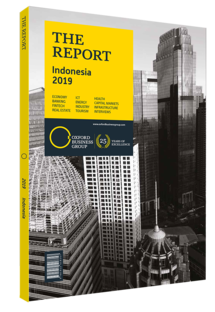Jens Reisch, President Director, Prudential Indonesia: Interview

Interview: Jens Reisch
What is the outlook for the insurance sector?
JENS REISCH: In Indonesia life insurance penetration is still low at 2-3% of GDP and around 8% in population terms. For life insurance, the products on offer are on par with those to neighbouring countries. With the country’s average life expectancy on the rise, the number of sophisticated life insurance products and solutions will continue to grow. On the other hand, health insurance, critical illness, family coverage and micro-insurance products are fairly comprehensive and the Islamic insurance segment is also growing rapidly.
Certain products such as micro-insurance are driven through specialised institutions such as people’s credit banks as well as the many financial cooperatives around the country. The aim of these institutions is mainly to connect insurance coverage to some form of micro-financing and lending. Flexible plans can be used to cover one person, a spouse or household, but they must be packaged in a simple way to make it appealing and financially viable for customers. How do you expect the integration of ASEAN economies to affect the Indonesian insurance segment?
REISCH: Regulators from across the region increasingly interact on an ASEAN-level basis, which has led to a more aligned corporate governance agenda. The increasing number of Indonesians working and studying abroad means insurance companies are working more closely with businesses in the region to meet their customers’ needs. In addition, the presence of international companies in Indonesia from across ASEAN and beyond also boosts sophistication, expertise and best practices in the domestic market.
How will technology aid the expansion of coverage?
REISCH: Although penetration rates in Indonesia are increasing slowly and organically, financial technology (fintech) and insurance technology are set to add to this growth and will accelerate the design of new policies marketed towards certain demographics. However, digitalisation alone is unlikely to help expand coverage as it needs to be combined with local and community-based interaction. Face-to-face interactions are still key within the insurance sector, and personal consultation remains pivotal to securing customers’ trust.
In addition, fintech purchases tend to be relatively simple and usually involve the purchase of single add-on products, such as car, travel or personal accident insurance. Even in many of the world’s most sophisticated insurance markets, it is very rare that the sale of core insurance products – usually involving health and life insurance – is done without human interaction. With technology-driven platforms, financial advisers are also able to provide customers with enhanced, faster and more personalised experiences, while their professionalism continues to be improved by on-demand and tailored training via mobile devices.
To what extent are financial education efforts translating into growing demand for insurance products?
REISCH: Financial literacy, inclusion and consumer protection are key priorities of the Financial Service Authority (OJK). Although there are geographical and cultural challenges, social media can help to increase the population’s appreciation and knowledge of insurance. The OJK and insurance associations are taking a hands-on approach to implementing consumer education initiatives across the country by going into the smaller cities to educate people on how life insurance products can help protect them financially.
The same strategy has been used to boost Islamic insurance product awareness and penetration rates, as some people find it difficult to understand the concept. However, as the number of people responding positively to this segment grows, insurance firms are closely following the trend. Currently, 27 companies offer sharia-compliant insurance products, with this number set to grow significantly over the coming years.
You have reached the limit of premium articles you can view for free.
Choose from the options below to purchase print or digital editions of our Reports. You can also purchase a website subscription giving you unlimited access to all of our Reports online for 12 months.
If you have already purchased this Report or have a website subscription, please login to continue.

